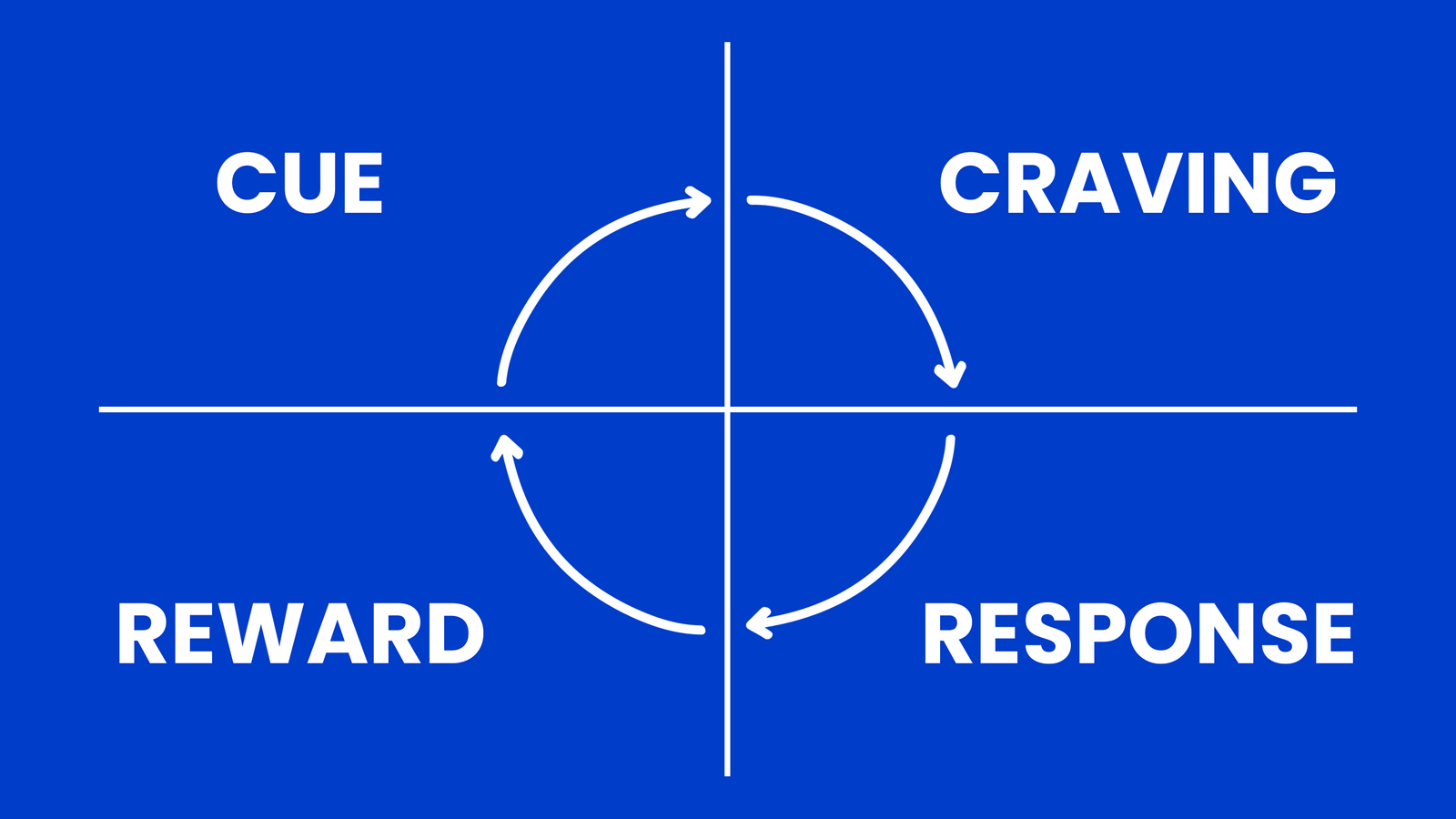In our pursuit of self-improvement and personal growth, one of the most recurring challenges we face is how to make good habits stick. Creating lasting, positive changes in our lives requires more than just willpower. It demands a deeper understanding of habit formation and effective strategies to maintain them.
In this blog post, we explore the science of building and sustaining good habits, with a special focus on the insights provided by James Clear’s book, Atomic Habits.
Contents
Unpacking the Power of Habit Formation
Before we delve into the strategies for making good habits stick, it’s crucial to understand the psychological and behavioral dynamics behind habit formation. Also be sure to first get an idea of your own habits by using the Habits Scorecard.
The Habit Loop
In Atomic Habits, Clear introduces the concept of the habit loop, which consists of four key elements: cue, craving, response and reward. The cue is the trigger that initiates the habit, the craving is the desire that underlies the habit, the response is the behavior itself, and the reward is the positive outcome that reinforces the habit. Recognizing and manipulating this loop is pivotal in understanding how to make good habits stick. Clear’s explanation of the habit loop provides the framework to dissect and master any habit.

An example of this system at work is when you walk down the street and smell delicious pastries from the bakery a couple of steps away (cue). The smell makes you hungry for some pastries (craving). As a result, you walk into the bakery and buy a cinnamon roll (response). You satisfy your craving for a pastry (reward) and walking down this street becomes associated with buying pastries.
By strategically adjusting the four stages of cue, craving, response and reward, we can use the habit loop to make good habits stick. As every stage requires its own approach, we’ve divided the strategies in this article into the four stages of the habit loop.
▼ Ad
How to Make Good Habits Stick: Cue
The cue is the first step in the habit loop and consists of the trigger for your habit. The core in making good habits stick through the cue is to make it obvious.
Alter Your Environment
One of the best ways to building lasting habits is to make them obvious through altering your environment. If you want to drink more water, leave a glass on your desk. And if you want to brush your teeth more often, be sure to make your toothbrush hard to miss. By making the habit obvious through your environment, you’re more likely to follow through. The 20-Second Rule can be especially helpful when altering your environment.
Use Habit Stacking
Habit stacking is a concept introduced by Clear that involves attaching a new habit to an existing one. The end of your first habit becomes the cue for the second habit. By associating your new habit with an established routine, you create a strong cue to trigger the behavior you want to adopt. For example, if you already have a habit of brewing morning coffee, you can stack a habit of stretching immediately afterward.
Practice Consistency
Consistency is the key to making good habits stick. Clear emphasizes the importance of showing up and performing your habits regularly. This is especially true if you practice a habit at a set time. Regardless of external circumstances, maintaining your habit schedule is essential for long-term success. The more often you perform a habit, the more obvious it will become. At a certain point it will simply become second nature. The 2-Day Rule can be especially helpful if you struggle with consistency.
How to Make Good Habits Stick: Craving
The craving is the second step in the habit loop and consists of the desire for a reward by completing your habit. In short, if you want to make good habits stick through craving, you should make it attractive.
Surround Yourself With Good Behavior
The people around you have a huge impact on your behavior. For example, if you surround yourself with smokers, it can be tough to not start smoking yourself. That’s why it can be helpful if you surround yourself with people who already practice your desired behavior. This creates a norm where your desired behavior is the normal behavior, making it extra attractive to keep performing the habit.
Use Temptation Bundling
A powerful way to make a habit more attractive is through temptation bundling. This means you bundle an action you want to do with an action you need to do. Clear gives an example that really stood out to me: bundling watching Netflix (the thing you want to do) with riding an indoor cycling bike (the thing you need to do).

How to Make Good Habits Stick: Response
The response is the third step in the habit loop and consists of the action or behavior of your habit. You should make this step easy if you want good habits to stick.
The Two-Minute Rule
One of the standout principles from Atomic Habits is the two-minute rule. This rule emphasizes starting with a habit that takes just two minutes to do. The logic is simple: any habit can be made more manageable by reducing it to its most basic form. This not only lowers the barrier to entry but also ensures that you consistently perform the habit.
For example, if your goal is to develop a daily writing habit, start by writing for just two minutes each day. Over time, this micro habit can expand, and you’ll find it easier to make such a good habit stick.
Optimize Your Environment
Another central theme in Atomic Habits is the importance of optimizing your environment. Clear suggests making the desired behavior the easiest option and eliminating obstacles to your habits. If you want to go to the gym consistently, lay out your workout clothes the night before, and create an environment that encourages physical activity.
The core here is to reduce friction. So think about how you can make performing your good habit a little easier. Perhaps it’s by eliminating certain steps? Of maybe you could make the process of performing your habit more efficient?
▼ Ad
How to Make Good Habits Stick: Reward
The reward is the fourth and final step in the habit loop and consists of the reward you get for completing your habit. You should make this reward as satisfying as possible if you want to make good habits stick.
Employ Immediate Gratification
To make good habits stick, consider employing immediate gratification. Clear’s book underscores the importance of immediate rewards in reinforcing behavior. Celebrate small wins and associate your habit with something enjoyable, even if it’s as simple as enjoying a piece of dark chocolate after a workout.
Use Accountability Partners
Accountability partners can significantly impact your ability to maintain good habits. Share your goals with a friend or family member who can keep you on track and provide motivation and support. Knowing someone is watching your progress can be a powerful incentive to stick with your habits.
Commit to Habit Tracking
Tracking your habits through a habit tracker is a powerful strategy. This technique helps you visualize your progress and reinforces your commitment to the habit. Whether it’s a physical journal or a digital app, tracking your habits keeps you on course and allows you to see your growth.
It gives great satisfaction when you build up a streak and you don’t want to break that streak. However, life happens, so it’s not the end of the world when you miss your habit once. In fact, I’d advise to keep your streak intact if you miss only once. Just be sure to never miss twice, as this is shown to greatly reduce your chances of succeeding in making such a habit stick.
Conclusion: How To Make Good Habits Stick?
In conclusion, making good habits stick is a process that will be a lot easier if you understand the science of habit formation and implement practical strategies. James Clear’s book, Atomic Habits, offers invaluable insights and a roadmap to effective habit building. It has helped me greatly, and I hope these insights will help you as well.
In short, you should make your habit obvious, attractive, easy and satisfying. Are you ready to make a positive change in your life today? Then get started with the strategies from this article and make those good habits stick!




